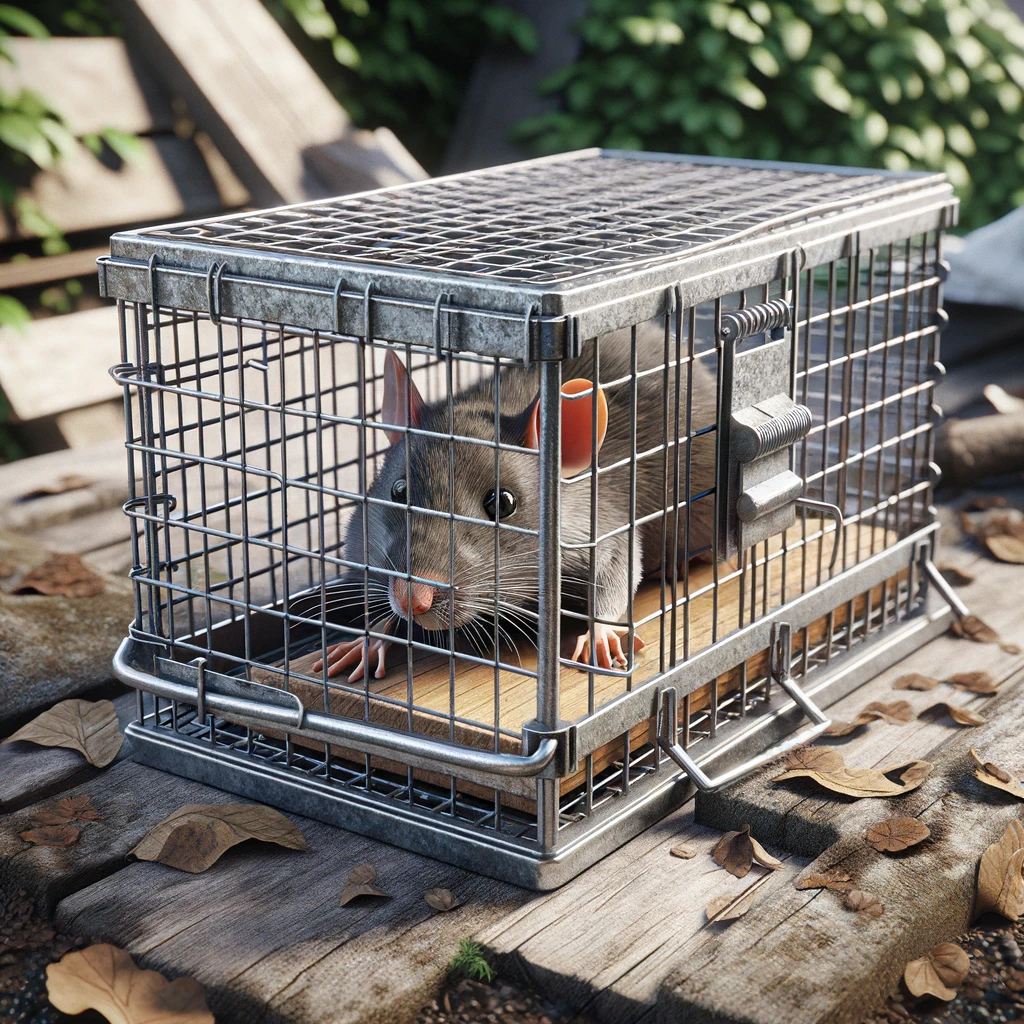
Rat infestations can be a distressing problem for homeowners. These troublesome rodents can cause damage to your property and pose health risks to you and your family. However, with the right strategies and techniques, you can effectively control and eliminate rats from your home. In this comprehensive guide, we will explore various methods to deal with rat infestations and optimize trap placement for success.
Before delving into effective trapping techniques, it is essential to identify the specific rat species infesting your home. The most common rats found in residential areas are the Norway rat and the roof rat. By determining the species, you can tailor your control methods accordingly.

Rats are opportunistic feeders and can survive on a wide range of food sources. Knowing their dietary preferences allows you to use the most enticing bait when setting traps. These omnivorous rodents have a preference for grains, fruits, nuts, and seeds. Incorporating these food items into your trap can significantly increase your chances of success.

Once you have identified the rat species and gained insights into their feeding habits, it's time to implement effective trapping techniques. Snap traps, glue traps, and live traps are commonly used methods. Snap traps, baited with irresistible food items, are highly effective and ensure a quick and humane kill. Glue traps, on the other hand, use a sticky adhesive to immobilize the rats, allowing for easy disposal. Live traps allow for catch-and-release, especially if you prefer a more humane approach.
When setting traps, it is crucial to position them in areas with high rat activity. Common hotspots include dark corners, along walls, near food sources, and behind appliances. Multiple traps should be set simultaneously to maximize the chances of capturing multiple rats at once.
Ridding your home of rats requires patience. It may take several days or even weeks to achieve desired results. It is essential not to become discouraged if you do not see immediate results. Rats are cautious creatures and may take time to trust newly introduced objects such as traps. By practicing patience and persistence, you will increase your chances of successfully exterminating these pesky rodents from your home.
Furthermore, it is important to note that rats are highly adaptable creatures. They possess a remarkable ability to survive in various environments, making them a formidable opponent in the battle against infestations. Their resilience is evident in their ability to thrive in both urban and rural settings, as well as their capacity to reproduce rapidly.
Another interesting aspect of rat behavior is their social structure. Rats are known to live in colonies, with a dominant male leading the group. These colonies can consist of several females and their offspring. The hierarchical structure within the colony ensures the survival and well-being of the group, as each member has a specific role and responsibility.
Proper trap placement plays a crucial role in effectively controlling rat populations. Identify areas where rats frequently travel, such as along the base of walls, near entry points, and in dark corners. These locations help increase the likelihood of rats encountering and engaging with the traps. Furthermore, placing traps perpendicular to walls can enhance their effectiveness, as rats tend to scurry along walls, seeking hidden pathways.
Rats are naturally suspicious of new objects in their environment. To overcome this skepticism, consider pre-baiting traps without setting them initially. Allow rats to familiarize themselves with the baited trap, thus increasing the chances of successful trapping once the trap is activated. Pre-baiting can build trust with the rats and make them more receptive to approaching the traps.
Poisons may seem like an effective solution; however, they carry risks, especially if you have children or pets in your home. To safely control rat populations without resorting to poisons, opt for poison-free baits. These baits are designed to attract rats while posing minimal risks to humans and non-target animals.
To maximize trapping efficiency, place traps directly along walls and in areas where rat droppings or gnaw marks are present. Rats prefer to run along edges, making wall placement an effective technique. By positioning traps strategically, you can intercept rats as they traverse your home, increasing the chances of successful trapping and eliminating infestations more quickly.
In addition to these strategies, it is important to consider the specific needs and behaviors of the rat species you are dealing with. Different rat species may have varying preferences for food, nesting areas, and travel patterns. By researching and understanding the habits of the rats in your area, you can tailor your trapping methods to be more effective.
Furthermore, patience is key when it comes to rat trapping. Rats are intelligent creatures and may take some time to trust and approach the traps. It is important to consistently check and maintain the traps, ensuring that they are clean, properly baited, and in good working condition. By maintaining a vigilant approach, you increase the chances of successful trapping.
In conclusion, effectively trapping rats requires a multifaceted approach. By identifying the rat species, understanding their dietary habits, implementing effective trapping strategies, practicing patience, and optimizing trap placement, you can achieve a rodent-free home. Remember to adapt your methods to suit your specific situation and always prioritize the safety of your household members and non-target animals. With the right techniques and a determined attitude, you can successfully reclaim your home from these unwelcome intruders.